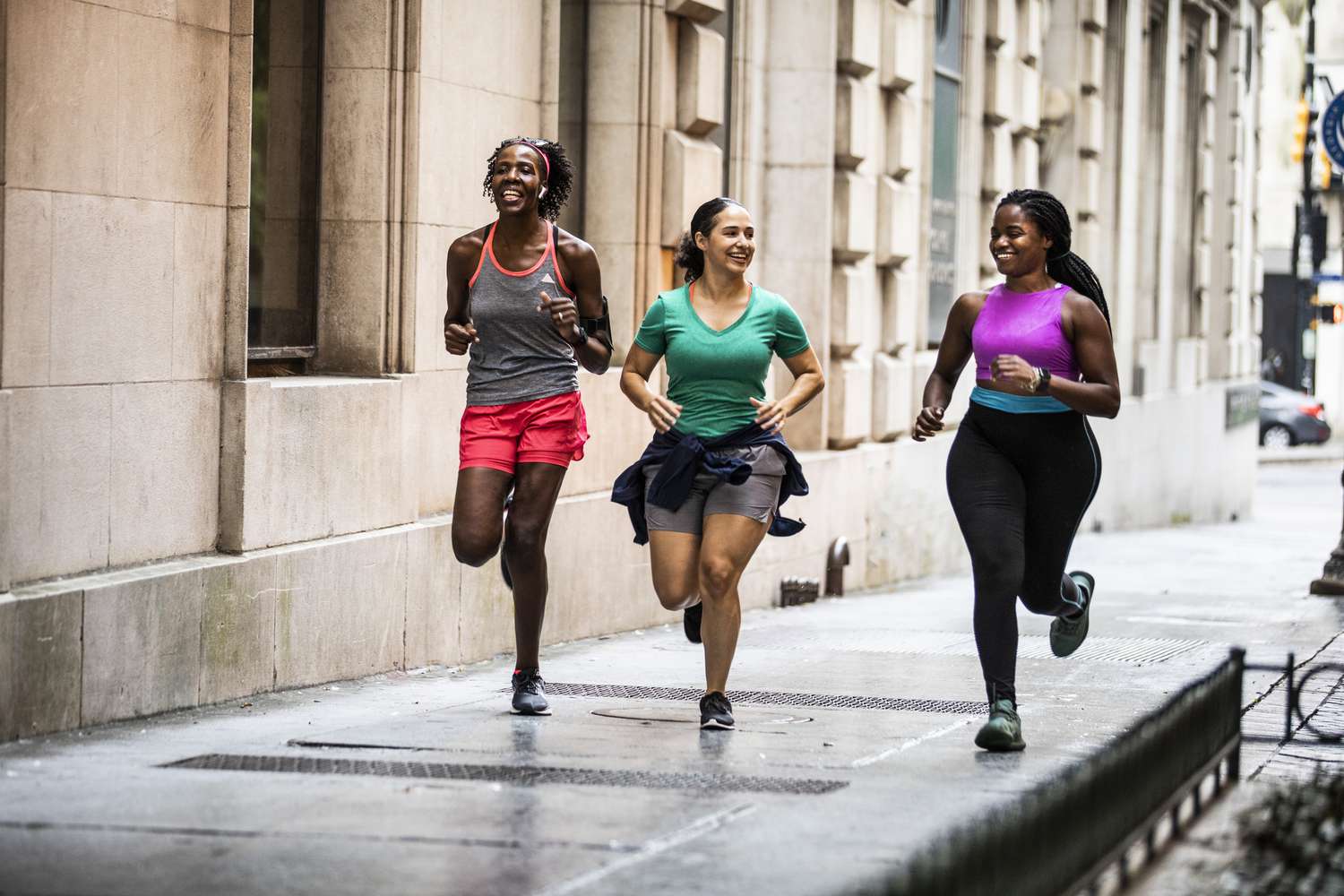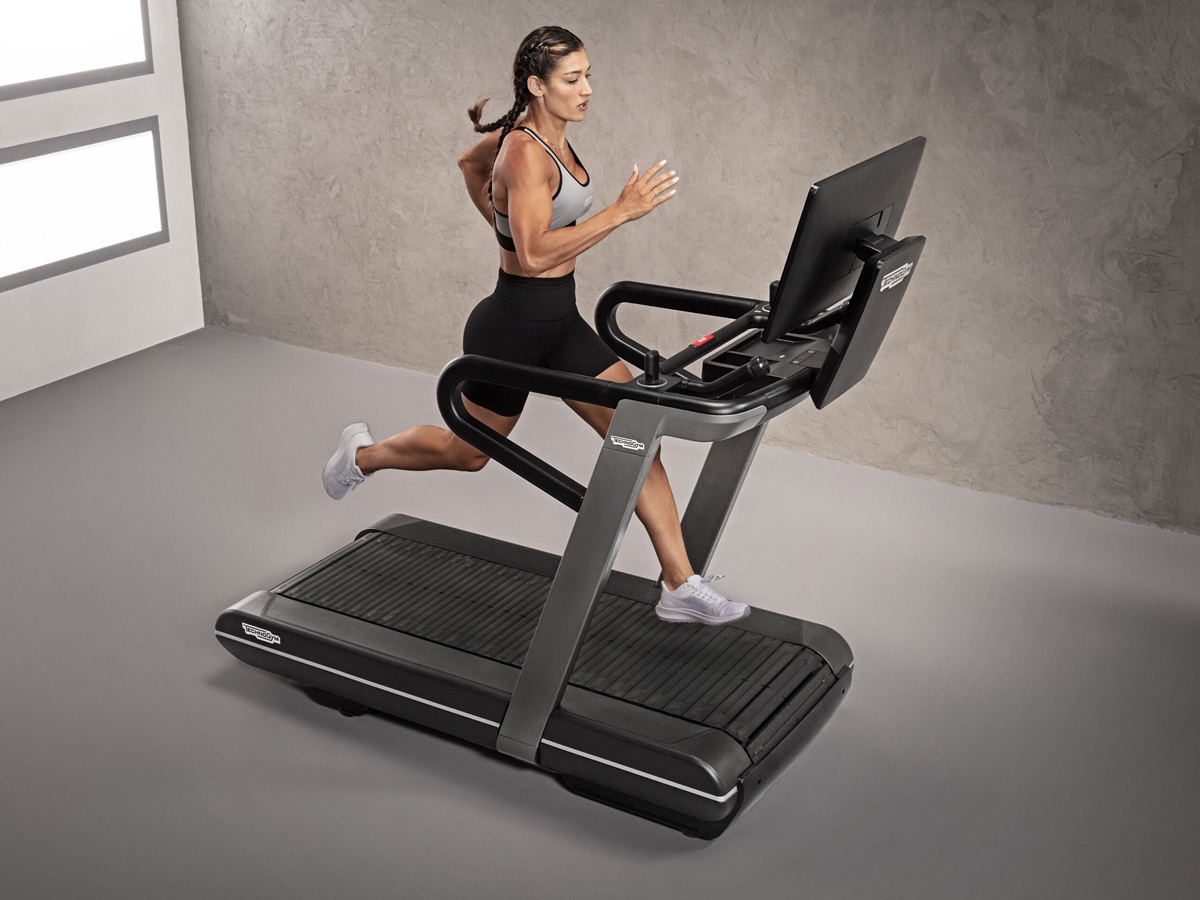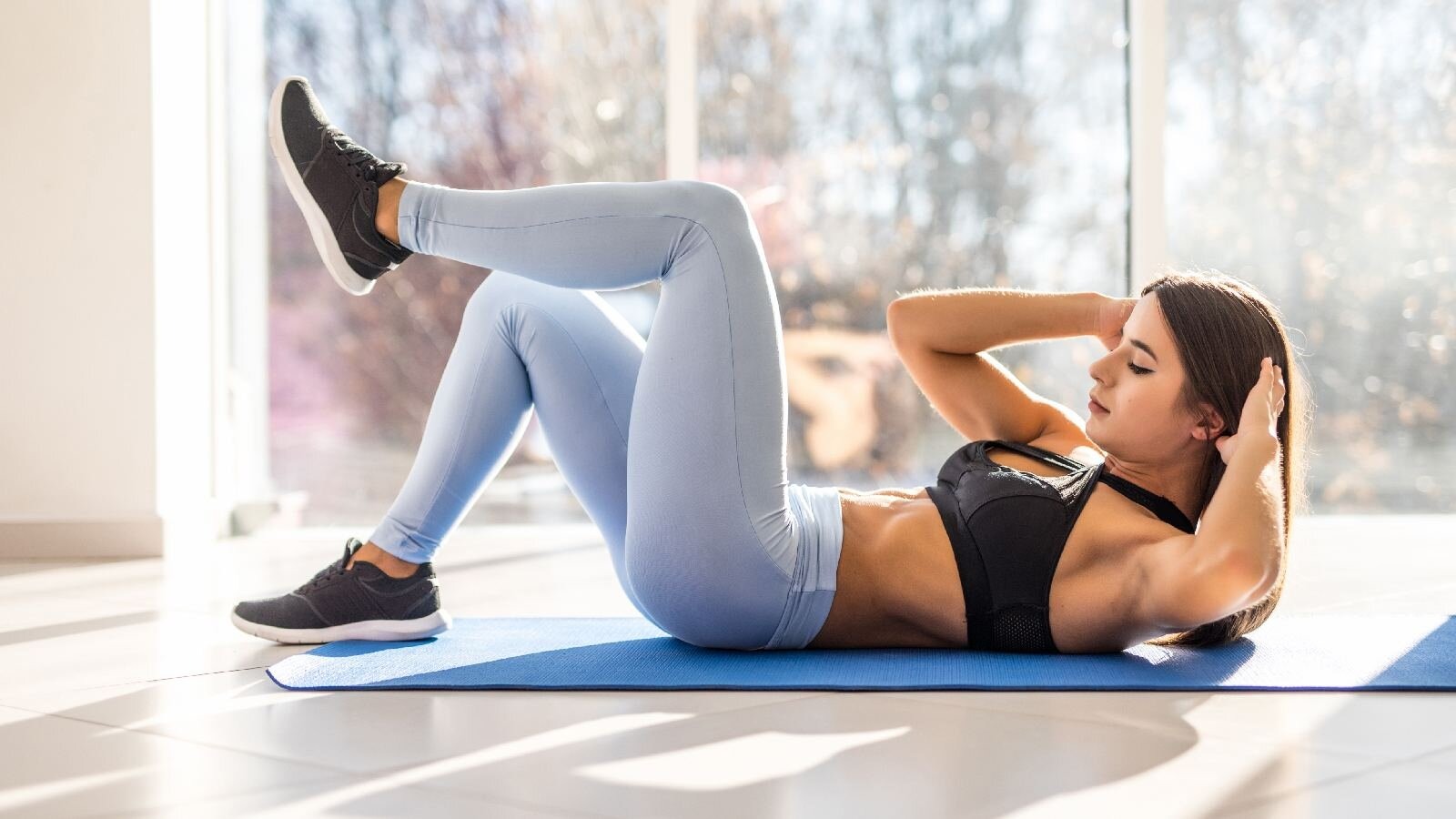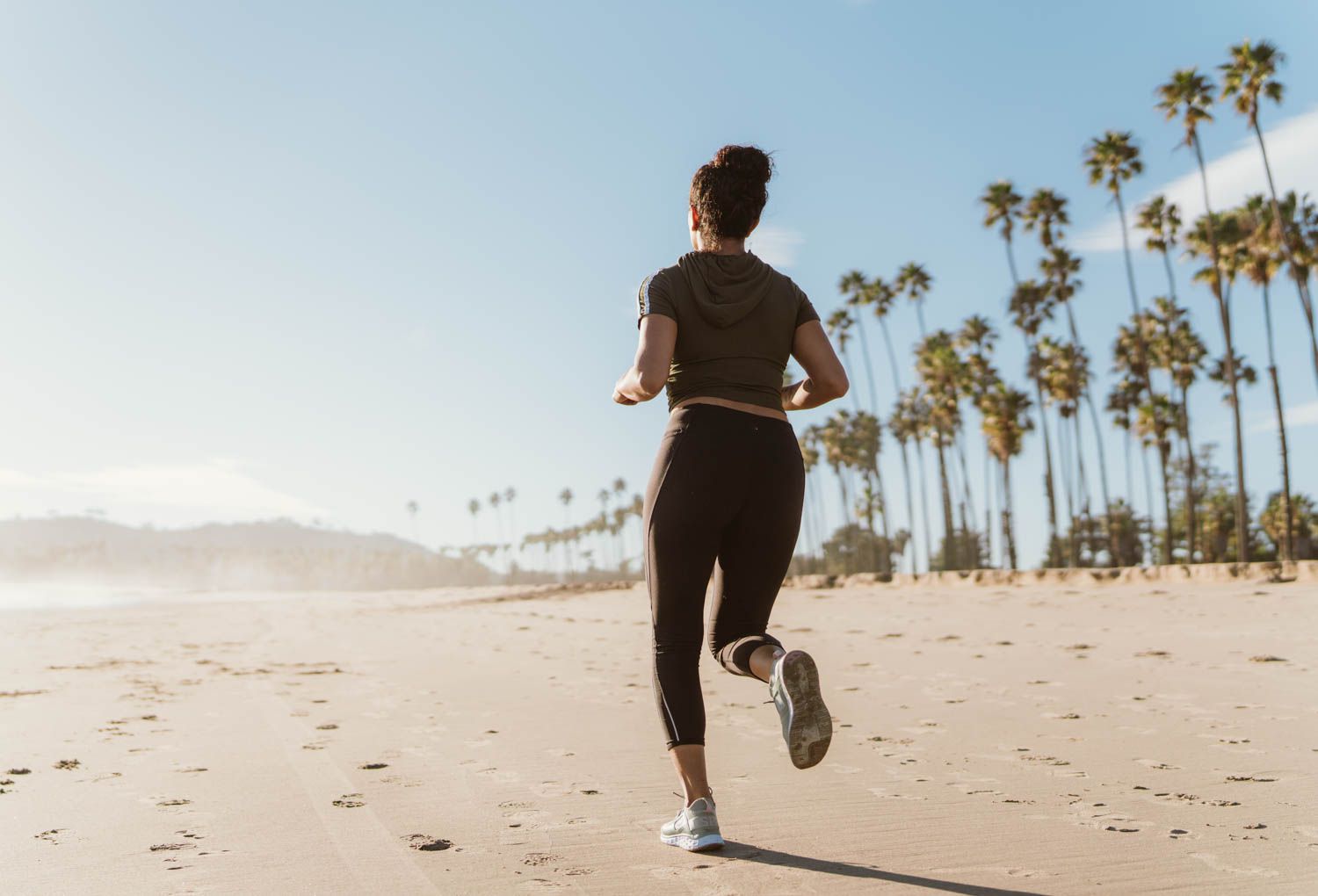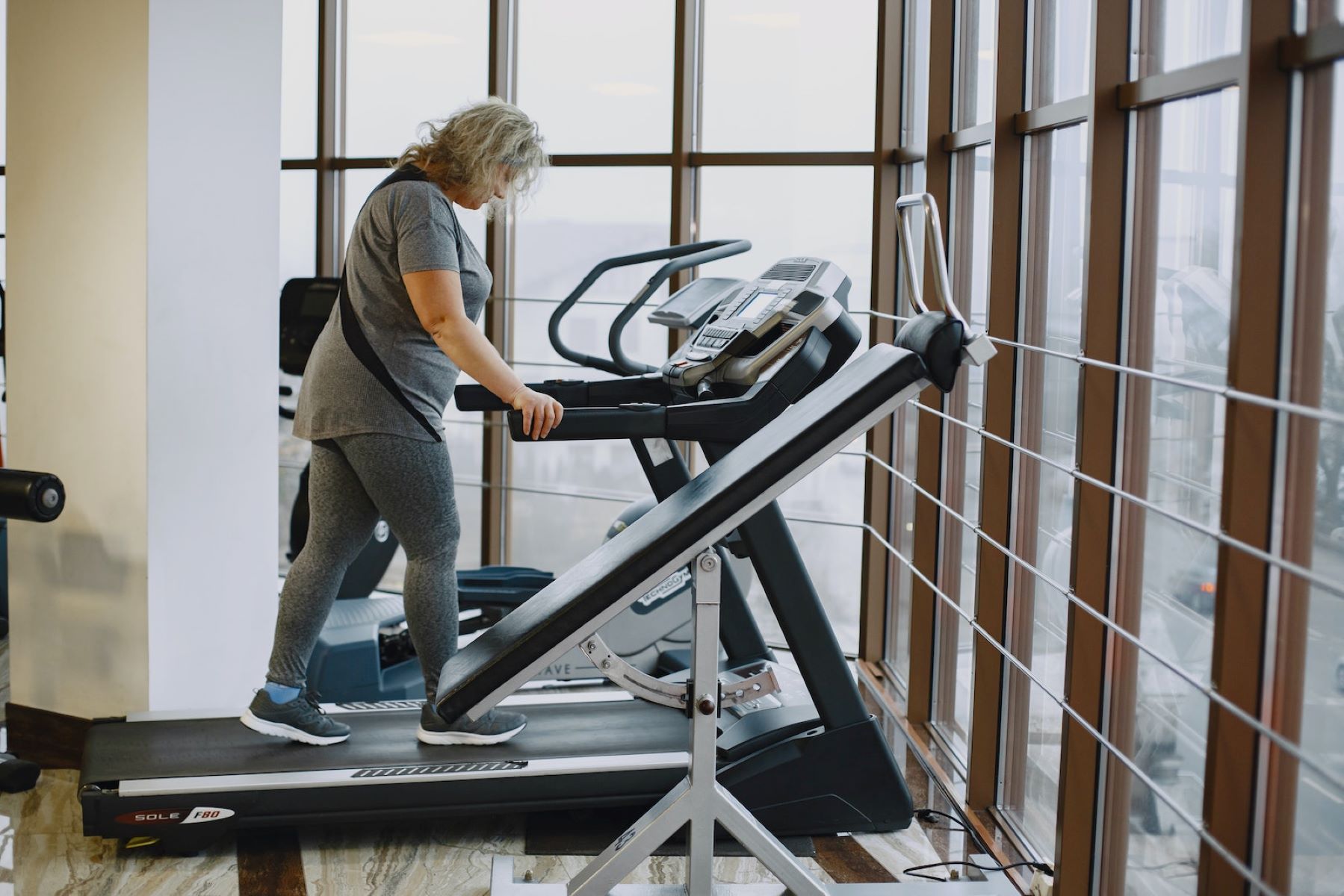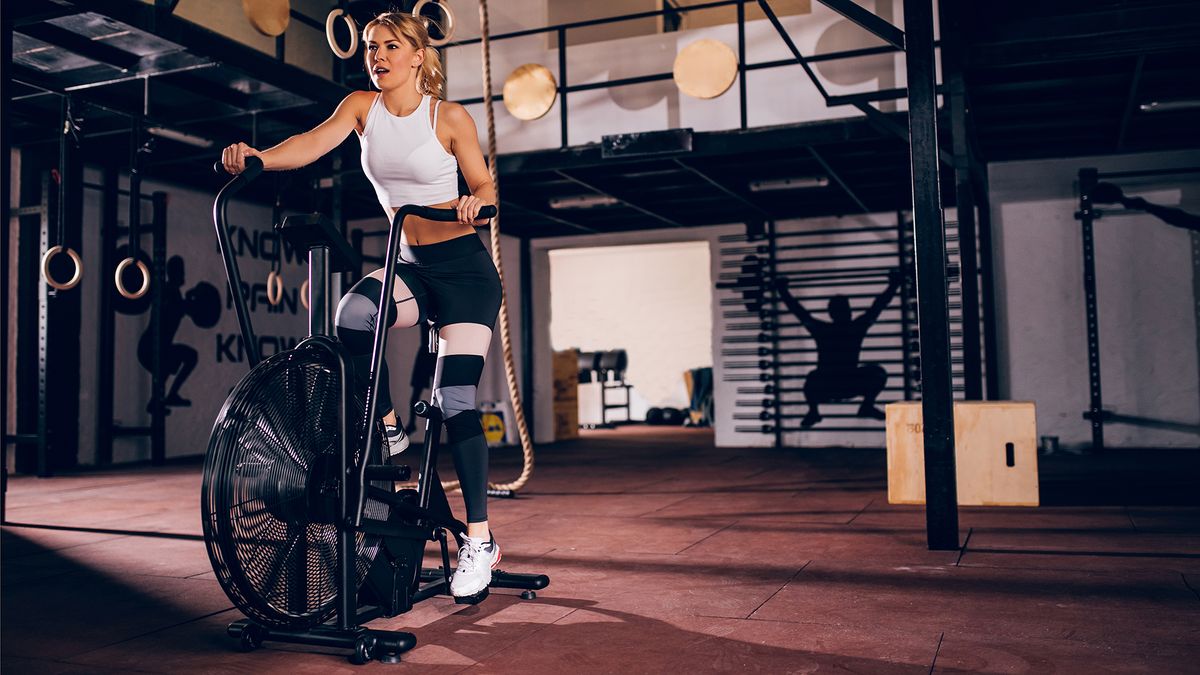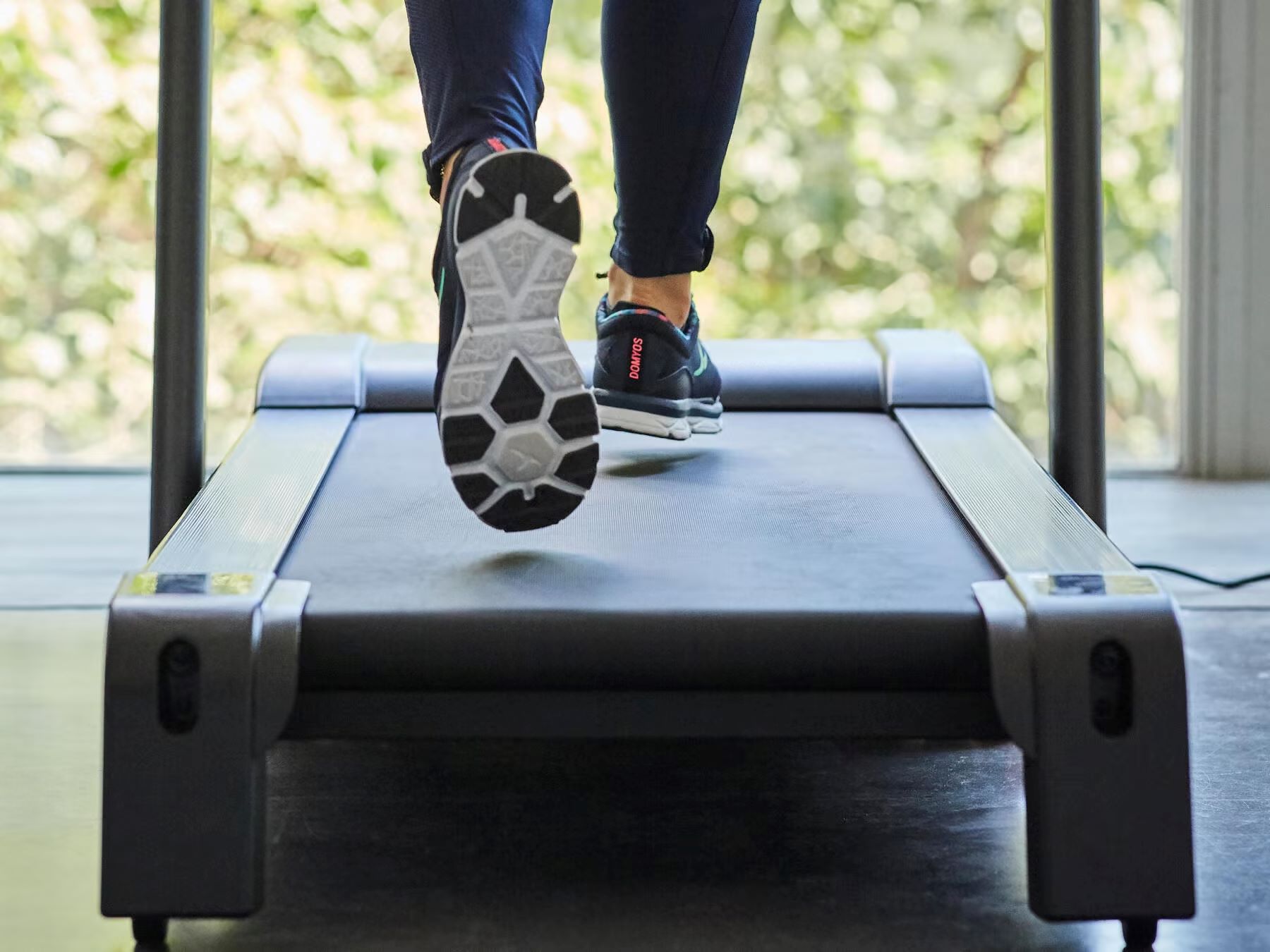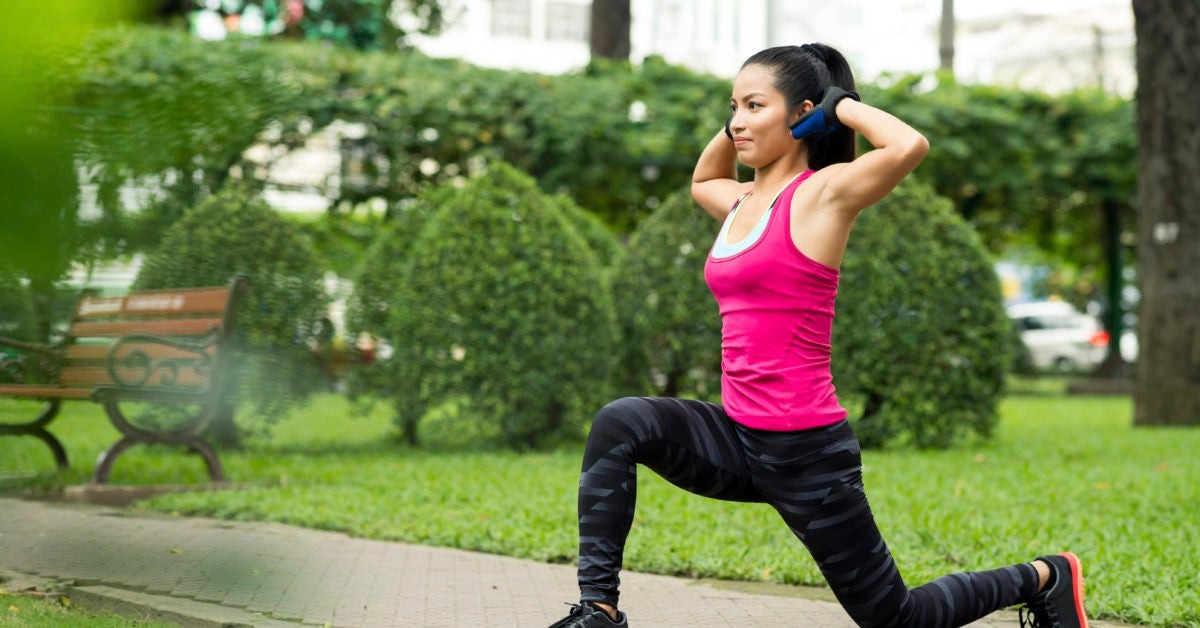

Featured
Why Do You Get Warm When You Exercise?
Published: October 1, 2023
Discover why you feel warm when you exercise. Find out the science behind this phenomenon in our featured article.
Introduction
Have you ever noticed that when you exercise, you start to feel warm? That’s not just a coincidence – it’s actually your body’s way of responding to physical activity. Understanding why you get warm when you exercise can help you better comprehend the complex mechanisms at work in your body and appreciate the fascinating ways it adapts to the demands of physical exertion.
When you engage in any form of exercise, whether it’s running, cycling, or even just brisk walking, your body undergoes a series of remarkable changes. Your heart rate increases, your muscles start working harder, and your breathing becomes faster and deeper. Alongside these internal modifications, there is also a noticeable change in your body temperature.
The rise in body temperature during exercise is primarily due to two main factors – increased metabolism and improved blood flow. These processes work together to ensure your body is well-equipped to meet the demands of physical activity and maintain optimal functioning.
So, why does exercise cause an increase in metabolism? Metabolism refers to the chemical reactions occurring within your body that convert the food you eat into energy. When you exercise, the energy demand of your muscles rises, requiring more fuel to be burned. As a result, your metabolic rate increases, leading to a natural elevation in body temperature.
Another crucial factor in the increase in body temperature during exercise is improved blood flow. As you move and work your muscles, blood vessels dilate and blood flow to your working muscles intensifies. This increased blood flow helps deliver oxygen and nutrients to your muscles while aiding in the removal of waste by-products.
Additionally, the activation of sweat glands plays a vital role in keeping your body temperature regulated during exercise. When your internal temperature rises, your body triggers the production of sweat to cool you down. As sweat evaporates from your skin, it carries away excess heat, helping to maintain your body temperature in a safe range.
Understanding the mechanisms behind why you get warm during exercise is not only intriguing but also important for maintaining your overall health and well-being. By comprehending the significance of proper heat regulation, you can make informed choices to ensure a safe and enjoyable exercise experience.
In the following sections, we will explore in further detail the various factors that influence your body temperature during exercise and how they contribute to overall performance and well-being.
How Does Exercise Affect Your Body Temperature?
Exercise has a profound impact on your body temperature, causing it to rise as your physical activity levels increase. This rise in body temperature is a natural and necessary response to the demands placed on your body during exercise.
When you start exercising, your muscles begin to contract and work harder, generating heat as a by-product of this increased activity. This heat production leads to an elevation in your body temperature. The rise in temperature is not only a result of the heat generated by your muscles but is also influenced by other physiological processes that occur during exercise.
One of the primary factors that contribute to the increase in body temperature during exercise is the accelerated metabolic rate. When you engage in physical activity, your body requires more energy to meet the demands of your muscles. This increased energy expenditure leads to a higher metabolic rate, which in turn generates more heat, thus raising your body temperature.
Additionally, exercise stimulates increased blood flow to your muscles. This enhanced blood flow is essential for delivering oxygen and nutrients to your working muscles, facilitating their optimal function. However, the increase in blood flow also contributes to the rise in body temperature. As blood vessels in your muscles dilate, more warm blood is brought to the surface of your skin, leading to a transfer of heat from your core to your skin’s surface.
In response to the rise in body temperature during exercise, your body initiates various mechanisms to maintain heat balance and prevent overheating. One of these mechanisms is the activation of your sweat glands. As your body temperature increases, sweat production is triggered to cool your skin and maintain a stable internal temperature. When sweat evaporates from your skin’s surface, it carries away heat, thus helping to regulate your body temperature.
It’s important to note that the extent to which your body temperature rises during exercise can vary depending on factors such as the intensity and duration of your workout, environmental conditions, and your individual physiological characteristics. High-intensity exercises and hot and humid environments can lead to a more significant increase in body temperature compared to low-intensity exercises in cooler conditions.
Understanding how exercise affects your body temperature is crucial for optimizing performance and ensuring your safety during physical activity. By being aware of the mechanisms at play, you can take necessary precautions to prevent overheating, stay hydrated, and make adjustments to your exercise routine according to the prevailing conditions.
In the next sections, we will explore the role of metabolism and blood flow in heating up your body during exercise, as well as the importance of proper heat regulation for your overall well-being.
The Role of Metabolism in Heating Up
In the context of exercise-induced temperature increase, metabolism plays a crucial role in heating up your body. Metabolism refers to the series of chemical reactions that occur within your cells to convert food into energy that your body can use. When you engage in exercise, your metabolic rate increases, leading to a rise in body temperature.
During physical activity, your muscles require more energy to perform their functions. This increased demand for energy triggers your metabolism to speed up. As a result, the rate at which your body converts food into energy is accelerated, and this process generates heat as a by-product.
Several factors contribute to the increase in metabolism and subsequent rise in body temperature during exercise. Firstly, the contraction of muscles requires energy, and this energy is provided through the breakdown of adenosine triphosphate (ATP), the body’s primary energy source. The breakdown of ATP releases energy which generates heat.
Furthermore, as you exercise, your body’s need for oxygen also increases. This increased oxygen demand is met through a process known as aerobic metabolism, where glucose and fats are metabolized in the presence of oxygen to produce energy. This process, known as cellular respiration, not only provides energy but also generates heat as a by-product.
In addition to aerobic metabolism, anaerobic metabolism can also contribute to the increase in body temperature during intense exercise. Anaerobic metabolism occurs when the demand for energy surpasses the oxygen supply available to the muscles. This process leads to the breakdown of glucose without the presence of oxygen, resulting in the production of lactic acid and an increase in body heat.
It’s important to note that the increase in metabolism and subsequent rise in body temperature is essential for proper muscle functioning during exercise. The increase in body heat helps promote enzyme activity and facilitates chemical reactions necessary for muscle contraction and energy production. However, it is crucial to ensure proper heat regulation to prevent overheating and maintain optimal performance.
In the next sections, we will delve into how increased blood flow and the activation of sweat glands contribute to the regulation of body temperature during exercise, as well as explore the factors that can influence body temperature fluctuations during physical activity.
Increased Blood Flow and Heat Distribution
When you exercise, your body undergoes a remarkable transformation, and one significant change is the increase in blood flow to your muscles. This enhanced blood circulation is essential for delivering oxygen and nutrients to your working muscles, ensuring their optimal function during physical activity. However, increased blood flow also plays a role in distributing heat throughout your body, contributing to the rise in body temperature.
As you engage in exercise, your muscles contract and work harder, requiring a greater supply of oxygen and nutrients to meet their energy needs. In response, your body dilates blood vessels in your muscles, allowing for an increased volume of blood to flow through them. This increased blood flow carries the necessary oxygen and nutrients to your working muscles, ensuring their efficient function.
As blood flows through your muscles, it also helps distribute heat throughout your body. As your muscles generate heat during exercise, the increased blood circulation helps carry that heat away from your working muscles and towards your skin’s surface. This redistribution of heat from your core to your skin is a crucial mechanism for maintaining your body’s internal temperature within a safe range.
Once the heat from your muscles reaches your skin, it can be dissipated into the environment through radiation, conduction, and convection. Radiation involves the transfer of heat from your body to the surrounding air, while conduction involves the transfer of heat through direct contact with cooler surfaces. Convection occurs when heat is carried away by air or water currents circulating around your body.
Furthermore, the transfer of heat from your core to your skin’s surface is facilitated by the temperature gradient between the two regions. As the blood flows through your muscles, it absorbs the heat generated, and as it reaches the skin’s surface, the heat is released through the process of radiation and convection. This helps cool down your body and maintain a balanced internal temperature.
It’s important to note that the efficiency of heat distribution through increased blood flow can be influenced by several factors. The intensity and duration of your exercise, as well as external factors such as environmental temperature and humidity, can impact how effectively heat is transferred from your core to your skin. In hot and humid conditions, for example, the body may struggle to dissipate heat efficiently, leading to an increased risk of overheating.
Understanding the role of increased blood flow and heat distribution during exercise is essential for maintaining proper heat regulation and preventing overheating. By staying hydrated, wearing appropriate clothing, and paying attention to environmental conditions, you can ensure that your body efficiently transfers heat and maintains a safe internal temperature during physical activity.
In the following sections, we will explore the activation of sweat glands and the importance of proper heat regulation in more detail, as well as discuss factors that can influence body temperature fluctuations during exercise.
The Activation of Sweat Glands
One of the most visible ways your body regulates its temperature during exercise is through the activation of sweat glands. Sweat production is a vital mechanism that helps cool down your body and maintain a steady internal temperature as you engage in physical activity.
During exercise, as your body temperature rises, the hypothalamus, which acts as the body’s internal thermostat, detects this change and initiates a response to cool you down. Signals are sent to the sweat glands located all over your body, triggering the production of sweat.
Sweat consists primarily of water, but it also contains small amounts of electrolytes, such as sodium and chloride. As the sweat glands release sweat onto your skin’s surface, the water evaporates due to the surrounding airflow, taking away heat from your body in the process. This process is known as evaporative cooling.
The evaporation of sweat has a significant cooling effect on your body. As the sweat evaporates, it takes away heat from your skin, effectively lowering your body temperature. This is especially beneficial in hot and humid conditions, where the rate of evaporation may be slower due to decreased airflow or increased moisture in the environment.
It’s important to note that the amount of sweat produced during exercise can vary depending on various factors, such as genetics, fitness level, environmental conditions, and the intensity and duration of your workout. Some individuals may naturally produce more sweat than others, while more intense workouts or exercising in hotter environments can lead to increased sweat production.
In addition to cooling your body, sweating also helps maintain electrolyte balance. When you sweat, small amounts of electrolytes, such as sodium and chloride, are lost. These electrolytes are essential for proper muscle and nerve function, and maintaining electrolyte balance is crucial for optimal performance. Therefore, it’s important to replenish these electrolytes by staying hydrated and consuming electrolyte-rich fluids or foods after intense physical activity.
Furthermore, the activation of sweat glands during exercise can also improve your body’s heat tolerance over time. Regular exercise and exposure to heat can help train your body to produce sweat more efficiently and enhance your body’s ability to cool down. This adaptation can lead to better heat regulation during exercise, making your workouts more comfortable and safer.
Understanding the activation of sweat glands and its role in cooling your body during exercise allows you to better manage your body’s temperature and prevent overheating. By staying hydrated, wearing breathable clothing, and exercising in well-ventilated environments, you can support the natural cooling mechanisms of sweating and ensure a safe and enjoyable exercise experience.
In the next section, we will discuss the importance of proper heat regulation during exercise and explore additional factors that can influence body temperature fluctuations.
The Importance of Proper Heat Regulation
Proper heat regulation is vital for maintaining your overall health and well-being during exercise. When your body temperature rises excessively, it can lead to a variety of potential issues, ranging from discomfort and dehydration to more severe conditions like heat exhaustion and heatstroke. Understanding the importance of heat regulation can help you make informed choices to optimize your performance and stay safe during physical activity.
During exercise, your body generates heat as a result of increased metabolism and muscle activity. This rise in body temperature triggers various mechanisms, such as increased blood flow and activation of sweat glands, to regulate and dissipate the excess heat. These mechanisms work together to maintain your body temperature within a narrow and safe range.
If your body is unable to effectively regulate heat during exercise, it can lead to several adverse effects. Overheating can cause discomfort and negatively impact your performance by impairing your muscles’ ability to contract efficiently and increasing fatigue. Additionally, overheating can result in dehydration, as excessive sweating to cool down can lead to fluid loss if not properly replaced.
Excessive heat accumulation in your body can also lead to heat-related illnesses, such as heat cramps, heat exhaustion, and heatstroke. Heat cramps are painful muscle contractions that can occur during or after exercise, often due to electrolyte imbalances. Heat exhaustion is a more serious condition characterized by fatigue, dizziness, excessive sweating, rapid heartbeat, and possible nausea or vomiting. Heatstroke is the most severe heat-related illness, potentially life-threatening, and requires immediate medical attention. It is characterized by a high body temperature, confusion, loss of consciousness, and hot, dry skin.
To ensure proper heat regulation during exercise, there are several measures you can take. Firstly, staying hydrated is crucial. Drink plenty of water before, during, and after your workouts to replace the fluids lost through sweat. It’s important to listen to your body’s signals and drink even when you may not feel thirsty.
Wearing appropriate clothing is also essential for heat regulation. Choose lightweight, breathable fabrics that allow sweat to evaporate and air to flow, facilitating the cooling effect of sweating. Avoid wearing restrictive clothing that can impede heat dissipation and opt for loose-fitting and moisture-wicking garments.
Monitoring the environmental conditions is another crucial aspect of proper heat regulation. Exercise during the cooler parts of the day, if possible, and be mindful of humidity levels. In hot and humid conditions, your body may struggle to cool down efficiently due to reduced sweat evaporation, increasing the risk of heat-related illnesses.
It’s also important to listen to your body and recognize the signs of overheating. If you feel excessively fatigued, dizzy, nauseous, or experience symptoms like cramps, it’s crucial to stop exercising, find a cool place, and rehydrate. Seeking shade, using cooling methods like cold towels or ice packs, and gradually reducing the intensity of your workout can help bring your body temperature back to normal.
Proper heat regulation during exercise is essential for maintaining optimal performance, preventing discomfort and dehydration, and reducing the risk of heat-related illnesses. By understanding the importance of heat regulation and implementing appropriate strategies, you can ensure a safe and enjoyable exercise experience.
In the following section, we will discuss the factors that can influence body temperature fluctuations during exercise and provide further insights into optimizing heat regulation.
Factors That Can Influence Body Temperature During Exercise
Several factors can influence body temperature fluctuations during exercise, highlighting the importance of understanding these variables to optimize heat regulation and maintain a safe and comfortable workout. These factors can vary from individual to individual and can impact how your body responds to physical activity.
Firstly, the intensity and duration of your exercise play a significant role in determining the extent to which your body temperature rises. More intense workouts that involve high levels of muscle engagement and cardiovascular demand can lead to a more significant increase in body temperature compared to lower intensity activities. Likewise, longer durations of exercise can result in a cumulative rise in body temperature.
The environmental conditions in which you exercise can also have a significant effect on body temperature. Exercising in hot and humid conditions can make it more challenging for your body to cool down effectively. High humidity reduces sweat evaporation, impairing your body’s natural cooling mechanism. Additionally, exercising in direct sunlight or in hot environments without proper shade or ventilation can further increase the risk of heat-related illnesses.
Your individual fitness level and conditioning can impact how your body responds to exercise-induced temperature changes. Well-trained individuals tend to have more efficient cooling mechanisms and can tolerate higher body temperatures for longer durations compared to individuals who are less fit. Regular exercise and heat acclimatization can improve your body’s ability to regulate and adapt to heat stress, reducing the risk of overheating.
Hydration status is another critical factor that influences body temperature regulation during exercise. Dehydration impairs your body’s ability to produce and sweat effectively, leading to decreased heat dissipation. It is crucial to maintain proper hydration before, during, and after exercise by regularly drinking fluids, especially in hot and humid conditions or during prolonged workouts.
Certain underlying health conditions or medications can affect your body’s temperature regulation during exercise. Conditions such as cardiovascular diseases, thyroid disorders, and certain medications can interfere with your body’s thermoregulatory mechanisms, making you more susceptible to heat-related issues. If you have any pre-existing medical conditions, it is important to consult with your healthcare professional for appropriate guidance regarding exercise and heat safety.
Lastly, individual differences and genetic factors can also influence how your body responds to exercise-induced temperature changes. Some individuals may naturally have a higher sweat rate or a higher tolerance for heat due to genetic variations. These differences can impact how efficiently your body regulates temperature during exercise.
Understanding these factors can help you make informed decisions about your exercise routine and take necessary precautions to ensure proper heat regulation. Adjusting the intensity and duration of your workouts based on your fitness level, exercising in suitable environments, staying adequately hydrated, and considering any underlying health conditions are essential steps in optimizing body temperature regulation during exercise.
By being aware of these influencing factors, you can adapt your exercise routine accordingly and create a safer and more comfortable workout experience.
In the next section, we will conclude our exploration of why you get warm when you exercise and summarize the key takeaways from this article.
Conclusion
Understanding why you get warm when you exercise is an essential aspect of comprehending the intricate mechanisms of your body. Through increased metabolism, improved blood flow, and the activation of sweat glands, your body undergoes various changes to regulate heat and maintain optimal temperature during physical activity.
Exercise leads to an increase in metabolism, causing your body to generate more heat as it works harder to provide energy for your muscles. This rise in body temperature is further facilitated by improved blood flow, which distributes the heat generated by your muscles throughout your body. The activation of sweat glands plays a crucial role in cooling your body down, as sweat evaporates from your skin, carrying away excess heat.
Proper heat regulation during exercise is crucial for your overall well-being. Overheating can lead to discomfort, dehydration, and potentially serious heat-related illnesses. By staying hydrated, wearing appropriate clothing, exercising in favorable environmental conditions, and being aware of individual factors that influence body temperature, you can optimize your heat regulation and ensure a safe and enjoyable workout experience.
Factors such as the intensity and duration of exercise, environmental conditions, individual fitness level, hydration status, underlying health conditions, and genetic variations can all impact how your body responds and regulates temperature during exercise. By considering these factors and adjusting your workout routines accordingly, you can maintain an optimal body temperature and reduce the risk of overheating or other heat-related complications.
Remember, heat regulation is an essential component of exercise safety and performance. Ensuring that your body is equipped to handle the demands of physical activity is key to enjoying the benefits of exercise while minimizing potential risks.
So, the next time you get warm during your workout, embrace it as a sign that your body is working hard to adapt and thrive. Stay mindful of the factors that influence heat regulation, listen to your body’s signals, and take the necessary steps to maintain proper heat balance. By achieving a harmonious balance, you can maximize your exercise performance and make the most out of your fitness journey.
